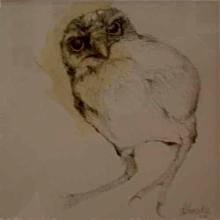
As anyone who has ever massaged an owl will tell you, these mysterious yet seemingly approachable creatures embody an illusion. Where there appears to be strength and silent muscle, there is in fact hardly anything but empty feathers.
What's true of owls is true of all birds, and this intriguing disparity between appearance and reality, substance and absence, has long intrigued artists who themselves grapple with form and the problems of winging it to create likenesses out of thin air.
In the Company of Birds, the new exhibition at Union Gallery, invites the avian responses of around a dozen contemporary Scottish artists, and there are some spectacular successes of which a few favourites are reviewed here.
Starting with the very small: Barbara Franc's recycled metal garden birds continue their popular success and all those on display here have now sold. Again, small – observed with precise relish for the macabre, ugly inchoateness of chicks – is Laura Homoky's pencil drawing 'Caged III' (above). I find the latter simultaneously funny, horrifying and sweet: a confusing variety of responses to such elegant draughtsmanship.
Arguably the highlight of this exhibition – an eye-catching caw de théâtre – is Czech artist Marcela Trsova's flock of born-again corvids: 4 crows, 2 magpies and a jay assembled out of copper wire and wing feathers.
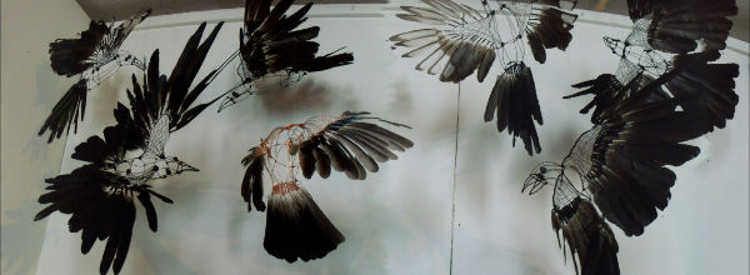
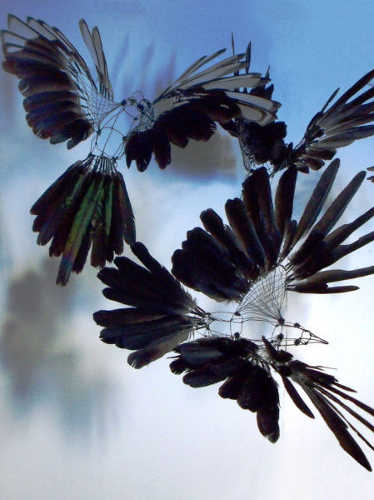
The delightful calm of Janet Melrose's 'Birdcage' and 'Barn Owls' – one a serene contemplation of prison and the other of a holy brotherhood of assassins – I found interesting, and a complementary visual presence to Trsova's more strident, three-dimensional neighbours. My favourite among her works here, though, was 'Francis Drake and Lady Penelope' – a work of deceptive simplicity which rewards patient attention. (It appears facing out in one of the gallery's Union Street windows).
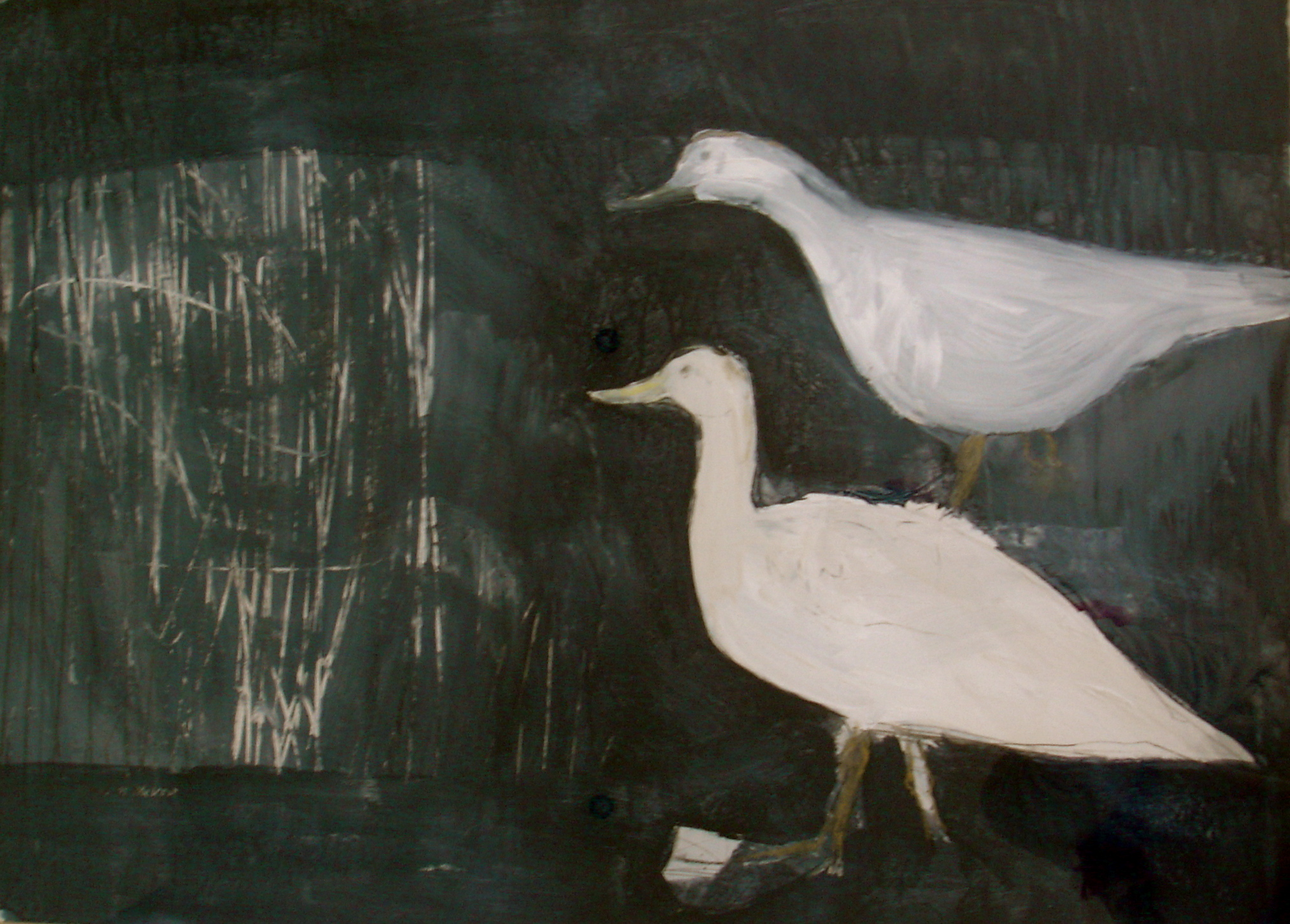
Less aethereal, nailed with the unblinking focus of a perfectionist, is Dylan Lisle's 'Ode' (below). That glossy crow; that mouth-watering lapis lazuli background; the uncanny eye ... I feel sometimes that Lisle imposes meaning on his subjects rather than waiting for meaning to emerge, but there is something hugely satisfying in his mastery of technique and apparent self-confidence which I admire and enjoy. The effect, as here, may sometimes have the clarity of nightmare, but it is unforgettable.
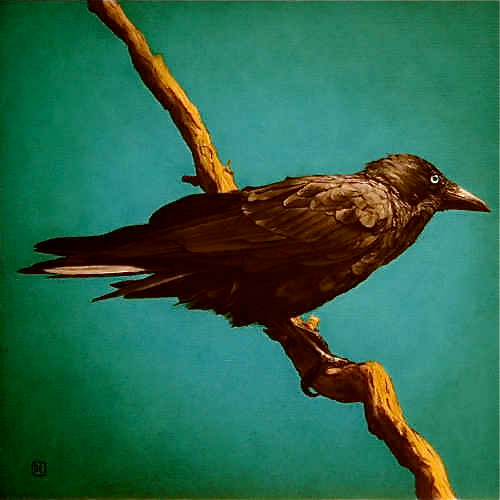
There are many other artists with works worth studying here, but I could not part without mentioning two by Joyce Gunn Cairns. I loved her forthright, fearless, untidy 'Crows Ower a Fence', and the bitter-sweet, comedic and serious undertones of 'Poseur' (below), in which the bird struts at its own reflection, reacts helplessly to its own physical and sexual identities. Cairns's work is thus a neat observation of nature, and a wry acknowledgement of the often absurd human (adult) condition. AM
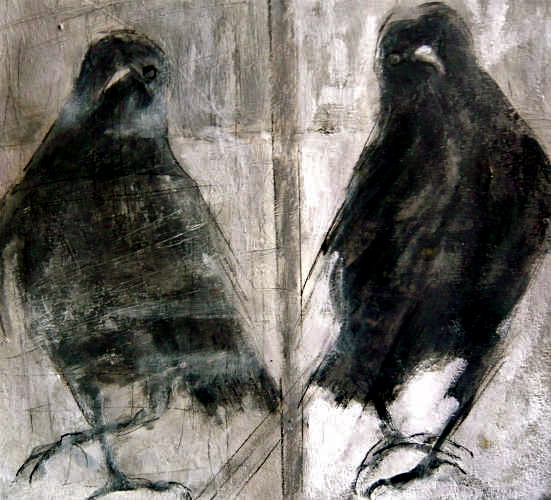
[In the Company of Birds continues at the Union Gallery (45 Broughton Street) until 27 February 2013.]